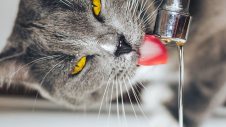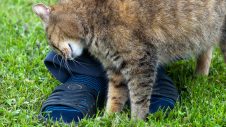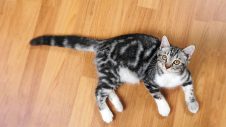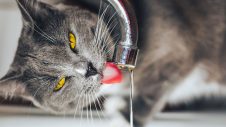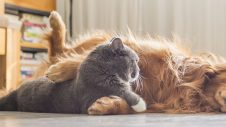Chronic upper respiratory tract (URT) disease can be common in cats. Usually, it follows on from a viral infection like cat flu. The viruses cause the initial mucosal damage, but long-term signs relate to secondary bacterial infection of damaged nasal passages. More unusual causes include fungal infections such as Cryptococcus, inflammatory polyps, neoplasia (cancer), damage from foreign bodies, trauma, or dental disease.
Clinical signs
The clinical signs of chronic URT disease include:
- nasal discharge
- noisy
- difficulty breathing
- sneezing
A thorough physical examination by a veterinarian is needed to diagnose the extent and cause of the disease.
Diagnosis
If your veterinarian feels that chronic post-viral rhinitis is the cause, and your cat is not too distressed, no further investigation may be recommended. Further examinations are recommended for cats with severe or progressive clinical signs, or those with evidence of more widespread disease.
Further investigation begins with non-invasive tests such as haematology, biochemistry, and tests for FIV (Feline Immunodeficiency Virus) and FeLV (Feline Leukaemia Virus). The next step is examination under general anaesthesia, which allows the veterinarian to look up the nose, examine the back of the throat and behind the soft palate, and also a more thorough examination of the teeth and ears. The skull and nasal cavities can be x-rayed and biopsies and swabs taken for examination and culture.
These procedures make it possible to identify possible underlying causes, so the correct treatment can be given.
Treatment
When a specific cause has been found, sometimes a cure is possible. Polyps can be surgically removed, some cancers can be controlled with chemotherapy, and fungal disease can be cured with anti-fungal drugs. However, since most cases of URT disease will result from chronic post-viral damage, the likelihood for a full recovery, even with treatment, is low. In most cases, the clinical signs can merely be controlled, since the damaged nasal passages cannot be repaired.
Antibiotics can be given to reduce secondary bacterial infection. It is usually necessary to give them for long periods of time or as repeated courses in order to control symptoms. Other treatments include mucolytics and steam inhalation, which reduces the thickness of nasal secretions and helps the cat breathe more easily.
The most important part of treatment is good nursing care. Keeping the cat’s face clean and clear of discharge and encouraging them to eat by feeding strong-smelling food that is slightly warmed will help.
If your cat has been diagnosed with chronic nasal discharge and you have concerns about the management of the issue, your local Greencross Vets can give you advice.

 Greencross Vets
Greencross Vets 

